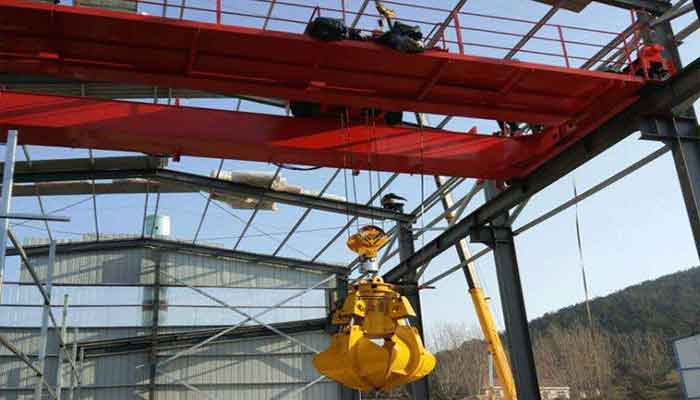
How to Determine Hoist & Overhead Crane Duty Classification?
How to determine electric hoist & overhead crane duty classification? What affects electric hoist duty classification & overhead crane duty classification selection?Rated Load,Service hours,Number of Lifts& Distance,etc.
The duty or service classification of cranes and hoists is a complicated operation. The participation of various standards, which utilize diverse methodologies to derive duty ratings, is the basis for this inference. Nonetheless, numerous strategies are used to make the procedure easier, and the categorization difficulty is lowered to a remarkable degree. One of the most well-known methods is that equipment on the market is rated according to domestic and/or international standards. The regulation, on the other hand, is a debatable topic, similar to when a crane and hoist supplier advertises the rated duty cycle; one must think about it. There is no direct oversight available to regulate the classification system since there isn't one.
What does crane duty classification mean?
Crane duty classification is determined by the crane load condition and crane grade. The classification principle is based on the frequency of distinct cases, average load, and crane life at the same level.
Crane classification also aids in improving the generality of crane parts. The lifting weight of crane components operating at the same general crane level can be determined. As a result, crane categorization has become a key foundation for crane components, crane parts, and component design. In addition, security checks, scrap standards, and accident assessments are used to establish a standard. So, while the duty classification, scrap standard, and safety factor are all different, combining them all helps determine the crane classification with greater accuracy.
Before buying a crane, why it is needed to confirm the duty classification?
It is necessary to identify the duty classification of crane types in order to determine the cranes' suitability for your application as well as the most cost-effective option. The right crane duty cycle gives you better results in terms of crane and component durability, since they are better suited to the usage and load requirements. As a result, it is recommended that you determine the overhead crane duty classification before purchasing.
As you can see, cranes with identical capacity and span can have a significant price difference due to their various duty classifications. Electric motors, electric hoists, bearings, end carriages, and crane controls are among the components and parts found in high-duty cranes. Cranes of the low-duty classification, on the other hand, are standard and manufactured with more cost-effective components. This aids in the determination of a cheap price for a lower duty classification.
You should also examine the future prospects while purchasing cranes. The production capacity will increase if you are planning long-term work or have a blueprint for future production expansion. This will result in a higher number of lifts per day or a higher load each lift. As a result, the purchase must be appropriate for your future demands.
What are the factors that affect crane duty classification?
It's critical to choose the right crane duty class for your crane. It has a direct impact on the initial investment cost of your manufacturing, as well as the future maintenance costs. The purchaser must provide the following information to the provider in order to determine the appropriate crane duty, mechanical components, and crane construction. This aids the maker in comprehending the application's requirements. When choosing the crane duty classification for your overhead crane, keep the following criteria in mind:
- Rated Load- In a day's time, an average load estimation must be lifted.
- Service hours- The number of hours in a day when operating.
- Number of Lifts- In an hour, the average number of lifts.
- Distance- Each movement's estimated travel length
Other factors to consider do not have a direct impact on the cranes' service and duty classification. However, these are important considerations for specifying and engineering cranes.
- Speed- How long does it take the lifting crane to move the materials or equipment? What is the average number of lifts an overhead crane performs in an hour?
- Maintenance requirements- What are the hoisting crane's maintenance requirements? Is it essential on a regular basis, or may there be a time gap? Also, how will the servicing or repair influence productivity and downtime?
- Operating environment- What is the environment or manufacturing conditions in which the overhead bridge crane will be used?
Standards of crane duty classifications
If you're looking for electrical equipment, for example,there is a specific document that verifies and inspects the service class of equipment available from suppliers. As a result, consumers should scrutinize the equipment provided by potential vendors carefully. Meeting the purchaser's service and obligation needs should be the most important consideration. Generally, the crane duty can be classified based on various standards, including the following:
- CMAA
- HMI
- AISE
- ISO
- FEM
Crane duty classifications of USA
The Crane Manufacturers Association of America has defined six (6) separate classifications for overhead cranes (CMAA). The purpose of overhead crane duty categorization was to allow the manufacturer and end-user to design the most cost-effective crane for the application, based primarily on the crane's average rated load and frequency of lifts.The six types of overhead crane classes are identified and defined below, along with the types of enterprises or industries that best match each overhead crane classification.

Duty Class A1 (STANDBY SERVICE)
- This duty categorization applies to cranes that must handle important machinery at sluggish speeds with long periods of time between lifts. For initial machinery installation and infrequent maintenance, rated loads may be handled..
- Bearing Life: 1,250 hours, Number of Lifts: Up to 2 per hour,Motor Starts/Stops: 75 per hour
- This type of crane is commonly found in power plants, public utilities, turbine rooms, nuclear reactor buildings, motor rooms, nuclear fuel handling, and transformer stations.
Duty Class A2 (INFREQUENT USE)
- These cranes will be employed in applications where the loads are light, the speeds are slow, and the level of control precision is low. With a frequency of a few lifts per day or month, the loads can range from no load to full rated weight.
- Bearing Life: 1,250 hours,Number of Lifts: Up to 2 per hour,Motor Starts/Stops: 75 per hour
- Cranes of this duty class are commonly found in small maintenance shops, pump rooms, testing laboratories, and other similar locations.
Duty Class B (LIGHT SERVICE)
- This duty rating applies to cranes with light service requirements, sluggish speeds, and loads that range from no load to full rated loads on occasion.
- Average load is 50% of the rated capacity,2 to 5 lifts per hour,Average lift distance of 15 feet,No more than 50% of the lifts at rated capacity
- Bearing Life: 2,500 hours,Number of Lifts: 2-5 per hour,Motor Starts/Stops: 75 per hour,
- Cranes of this duty class are commonly found in small repair shops, pump rooms, and testing laboratories, among other places.
Duty Class C (MODERATE SERVICE)
- This duty service class applies to cranes with moderate service needs.
- Average load is 50% of the rated capacity,5 to 10 lifts per hour,Average lift distance of 15 feet,No more than 50% of the lifts at rated capacity.
- Bearing Life: 5,000 hours,Number of Lifts: 5-10 per hour,Motor Starts/Stops: 150 per hour
- Cranes in this duty service class are commonly found in machine shops, paper mill machine rooms, and other similar locations.
Duty Class D (HEAVY SERVICE)
- Heavy-duty production is necessary in this duty service class, but there is no specific cycle of operations.
- Average loads approaching 50% of the rated capacity will be handled constantly during the work period
- High speeds are desirable for this type of service with 10 to 20 lifts per hour
- Average lift distance of 15 feet,No more than 65% of the lifts at rated capacity
- Bearing Life: 10,000 hours,Number of Lifts: 10-20 per hour,Motor Starts/Stops: 300 per hour
Cranes in this duty class are typically utilized in heavy machine shops, foundries, fabricating plants, steel warehouses, container yards, timber mills, and other heavy-duty manufacturing environments, as well as standard duty bucket and magnet activities.
Duty Class E (SEVERE SERVICE)
- This type of service necessitates a crane capable of continually handling loads approaching the rated capacity in a planned cycle of operation over a specified amount of time every day.
- Average load at or near the rated capacity,High speeds are required with 20 or more lifts per hour,The complete cycle of operation should be specified,
- Bearing Life: 20,000 hours,Number of Lifts: 20+ per hour,Motor Starts/Stops: 600 per hour ,
- Magnet, bucket, and magnet / bucket combination cranes for scrap yards, cement mills, lumber mills, fertilizer plants, container handling, and other applications are typical examples of this task class.
Crane duty classifications of China
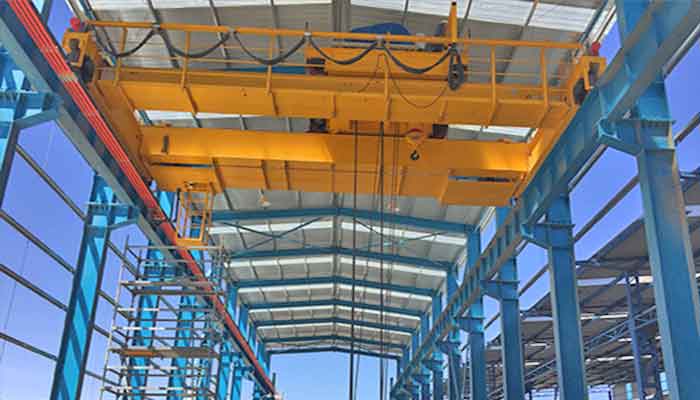
The crane use level indicates how frequently the crane was used over the design life. The general work cycle number N is divided into 10 levels based on the design life period (see table 1).
Table 1:
Crane use level | general work cycle number N | annotation |
U0 | 1.6*10 4 | Not often use |
U1 | 2.2*104 | |
U2 | 3.3*104 | |
U3 | 1.25*105 | |
U4 | 2.5*105 | Free to use |
U5 | 5*105 | Often secondary to use |
U6 | 1*106 | Don't always busy to use |
U7 | 2*106 | Busy use |
Crane load condition
The degree of the crane load is determined by two factors: the ratio of hoisting the load to the rated load Pi/Pmax, and the ratio of the role of various hoisting load numbers to the general work cycles ni/N. The following are the two load spectrum factor and Kp computed by type relationships:
 | In the formula: Kp—load spectrum factorand; |
The nominal load spectrum coefficient divides the crane load condition into four categories (see table 2)
Table 2:
Crane load condition | nominal load spectrum coefficient (Kp) | Explain |
Q1-light | 0.125 | Rarely lifting load rating |
Crane duty classifications of cranes
Crane duty categorization is separated into eight levels, ranging from A1 to A8. When compared to previous Chinese crane work laws, A1-A4 light, A5-A6 middle, A7 heavy, and A8 extra heavy are substantially equal.
The common crane duty categorization for overhead cranes, gantry cranes, jib cranes, and other types of cranes is shown in the table below.
Overhead crane duty classification

The duty classification for different types of overhead cranes is also highly variable. The primary duty classifications of overhead cranes are listed in the table below for your convenience. Please contact a local expert or leave a message below if you need to acquire an overhead crane and want to validate your overhead crane duty classification or duty service classification.
A1-A3 Hook overhead crane duty classification | Power station installation and maintenance |
A3-A5 Hookoverhead crane duty classification | In workshop and factory |
A6-A7 Hook overhead crane duty classification | Heavy work with workshop and warehouse |
A6-A7 Grab overhead crane duty classification | Discontinuous load and unload |
A8 Grab overhead crane duty classification | Continuous load and unload |
A7-A8 Metallurgy overhead crane duty classification | Used for Lifting work bin |
A8 Metallurgy overhead crane duty classification | feed in raw material |
A6-A8 Metallurgy overhead crane duty classification | Used for casting |
A7-A8 Metallurgy overhead crane duty classification | Used for forging |
A8 Metallurgy overhead crane duty classification | Used for quenching |
A8 Metallurgy overhead crane duty classification | Used for clamping |
A7-A8 Metallurgy overhead crane duty classification | Used for De-cap |
A8 Metallurgy overhead crane duty classification | Material rake |
A7-A8 Metallurgy overhead crane duty classification | Electromagnet type |
Gantry crane duty classification

For different applicaitons, different gantry crane duty classifications are selected. Gantry cranes are frequently adopted in the applications where material handling is required but without the cost of a supportive building or steel work. The motorized gantry cranes can be operated indoors and outdoors for various industrial applications in steel mills, steel stock yards, pre-cast segment yards, infrastructural construction sites and other outdoor application.
A5-A6 Gantry crane duty classification | General use hook type |
A7-A8 Gantry crane duty classification | Loading and unloading with the grab bucket |
A2-A3 Gantry crane duty classification | Power station with hook type |
A4-A5 Gantry crane duty classification | Shipbuilding mounting hook type |
A6-A8Gantry crane duty classification | Used for container |
Loading bridge crane duty classification

For different application, the loading bridge crane can be designed with different bridge crane duty classifications.
A7-A8 bridge crane duty classification | Yard handling with the grab bucket |
A8 bridge crane duty classification | Port with the grab bucket |
A6-A8 bridge crane duty classification | Port loading and unloading of containers |
Portal jib crane
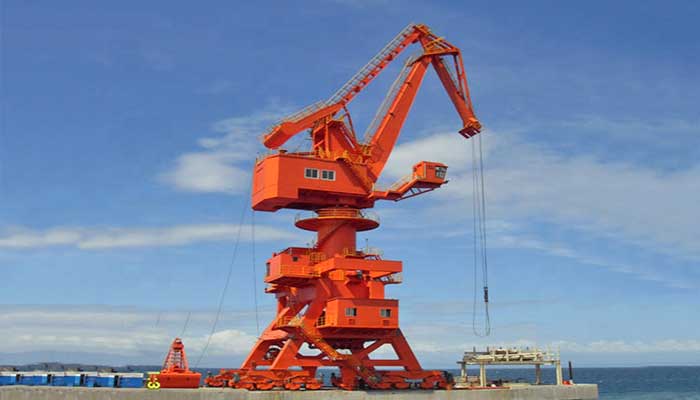
The duty classification of portal jib cranes can be classified into the following classifications:
A3-A5 jib crane duty classification | Installation used hook type |
A6-A7 jib crane duty classification | Hook type used for loading and unloading |
A7-A8 jib crane duty classification | Loading and unloading with the grab bucket |
Tower crane duty classification
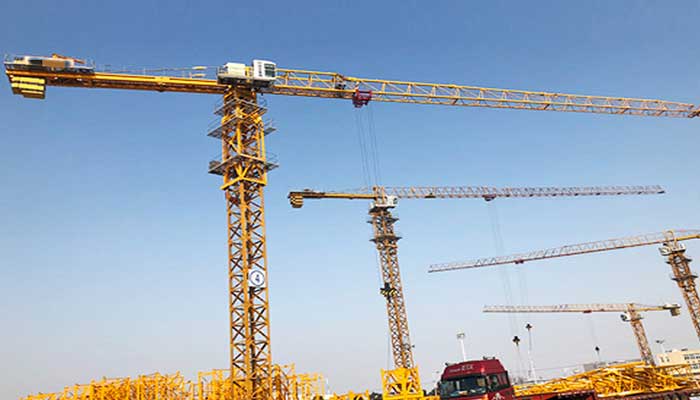
The duty classification of tower cranes can be classified into the following classifications:
A2-A4 tower crane duty classification | General construction and installation |
A4-A6 tower crane duty classification | With bucket loading and unloading of concrete |
Crawling crane truck crane duty classification
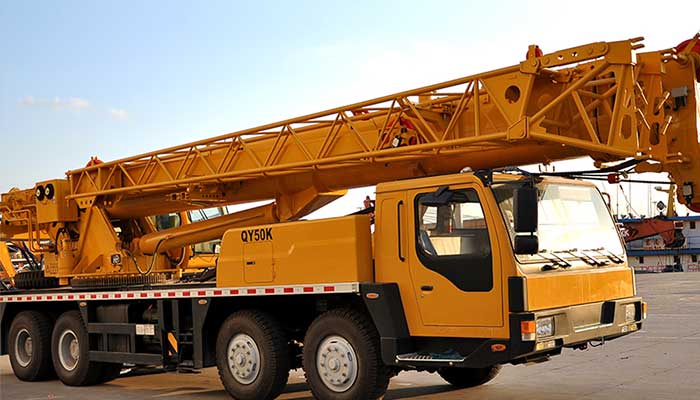
The duty classification of crawing cranes can be classified into the following classifications:
A1-A4 truck crane duty classification | Hook type |
A4-A6 truck crane duty classification | Grab bucket |